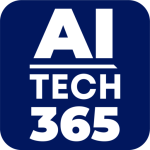LambdaTest, a GenAI-native quality-engineering platform, announced the launch of its new browser-based tool, LambdaTest Web Scanner, which combines visual UI regression testing and WCAG-compliant accessibility testing.
The Web Scanner enables teams to:
- Perform automated scans across browsers and more than 200 mobile viewports to detect layout changes, design mismatches and UI regressions.
- Conduct accessibility testing that identifies violations of WCAG (Web Content Accessibility Guidelines) and provides actionable recommendations.
- Schedule one-time or recurring scans, track history and compare results over time to spot regressions and ensure consistent visual/accessibility quality.
- Empower roles such as front-end QA teams (for catching layout shifts, broken UI), accessibility engineers (for compliance across large URL sets) and product owners (for monitoring release health) to maintain inclusive, high-quality digital products.
- Help agencies to provide clients with “before/after” visual proof and compliance reporting for inclusive web applications.
As Mayank Bhola, Co-Founder & Head of Products at LambdaTest, explains: “We’re excited to offer a powerful solution that combines visual regression and accessibility testing in one platform … LambdaTest Web Scanner empowers teams to proactively catch issues, ensuring a flawless user experience and compliance at scale.”
LambdaTest describes itself as a GenAI-powered QE (Quality Engineering) platform built for scale, supporting Selenium, Appium, Playwright and all major frameworks with 10 K+ real devices, 3,000+ browsers, AI agents like HyperExecute and KaneAI, and 120+ integrations.
Implications for DevOps in Artificial Intelligence
The announcement is significant not just for web testing teams it has broader ramifications for the DevOps and AI ecosystem. Here’s how this kind of tool plays into the DevOps-in-AI world:
Accelerated release cycles
In a DevOps paradigm (especially in AI-driven teams), frequent deployments, continuous delivery and rapid feedback loops are standard. Tools like LambdaTest Web Scanner tie directly into that – by automating visual and accessibility testing across build pipelines, teams can shift left, catching issues earlier. This reduces manual bottlenecks, speeds up release cadence and supports “deploy often, test smartly” philosophies.
For AI-centric applications say, web front-ends tied to AI services, dashboards, model portals ensuring consistent UI/UX and accessibility becomes part of maintaining trust, reliability and regulatory readiness.
Quality engineering in AI-driven environments
AI systems increasingly power web-based tools: dashboards, analytics portals, model interpretability views, etc. When an AI-powered application moves from prototype to production, its user interface and accessibility become part of the product’s quality story. DevOps teams operating in AI must therefore integrate QA not just for backend model performance but front-end usability, visual integrity and accessibility compliance.
A unified tool that handles UI regression and accessibility simplifies the workflow for teams that may also be juggling AI model monitoring, data drift detection, etc. It removes a layer of siloed test tools.
Inclusive design as a must-have, not an afterthought
Accessibility is increasingly seen as essential both for ethical reasons and for regulatory/compliance risk. In AI products particularly (especially in enterprise/industry settings), ensuring accessibility (WCAG compliance) signals maturity. DevOps functions in AI enterprises are therefore under pressure to bake inclusivity into their pipelines. A tool like LambdaTest Web Scanner gives them mechanised support for that.
This underscores a broader shift: DevOps in AI isn’t just about model deployment, infrastructure, monitoring and logging it’s also about the entire user experience that wraps around the AI capability. The “last mile” (the UI) must perform and comply.
Bridging gap between operations and product owners
DevOps often focuses on infrastructure, pipelines, automation and operational stability. But for AI products, product owners, UX teams and accessibility engineers become integral to the delivery process. A solution that presents clear “before/after” visuals, accessibility compliance reports, history & comparison data enables these stakeholders to participate actively in the DevOps pipeline.
For organisations running AI-powered web applications, that means better alignment between operational teams (DevOps), QA/Accessibility, product/UX and business stakeholders.
Also Read: OpenAI’s Company Knowledge: A Game-Changer for Business Technology
Business and Industry-Wide Effects
From a business perspective, this new tool announcement carries several important implications:
- Reduced time-to-market and lowered cost of quality: Manual visual and accessibility testing is time-consuming, error-prone, and expensive especially for large, complex web applications. Automating these checks helps firms catch issues earlier, reduce rework, and avoid last-minute releases with UI/UX defects. For businesses operating in AI, where speed matters (e.g., delivering new model capabilities, features), this adds a cost-efficient, quality-driven lever.
- Better user experience → higher adoption and loyalty: AI applications often face scepticism, usability issues and adoption hurdles. If the front-end has visual glitches, cross-browser issues or accessibility failures, users may disengage. A stable, inclusive, high-quality interface supports better customer experience, and by extension better ROI for the business. For B2B AI services and SaaS platforms, this is a competitive differentiator.
- Compliance and brand reputation risk mitigation: Accessibility failures can lead to legal/regulatory exposure in many jurisdictions. For businesses building AI-powered web products, a compliance-ready front-end is increasingly non-optional. Additionally, brand reputation can be upheld by demonstrating inclusive design practices. The automation of accessibility testing elevates that readiness.
- Scalability and internationalisation: Many AI businesses serve global markets, with multiple devices, locales, browsers and accessibility requirements. A tool that supports hundreds of mobile viewports, multiple browsers, and recurring scans enables scalability of the front-end quality posture. This scalability aligns with the growth trajectories of AI-centric businesses.
- Enabling agencies and service firms: LambdaTest mentions that agencies can use the tool to deliver clients with visual proof and reports. This means that firms offering DevOps, QA or AI-application development services can sharpen their offering. For businesses in the AI ecosystem relying on partner agencies (for example, AI model deployment + web GUI build + DevOps pipeline), the existence of this scanner provides an additional value proposition to client engagements.
Final Thoughts
In sum, the launch of the LambdaTest Web Scanner marks a notable step in the evolution of quality engineering for web applications, especially in AI-driven environments. For teams practising DevOps in Artificial Intelligence, it signals that testing is moving beyond merely infrastructure, model validation and backend monitoring the visual front-end and accessibility conditions are now equally operationalised.
Businesses in the AI/devops product space should take note: embedding automated visual screenshot regression and accessibility compliance into your CI/CD pipeline is no longer a “nice to have” but a strategic capability that supports speed, quality, UX, compliance and global scale.

